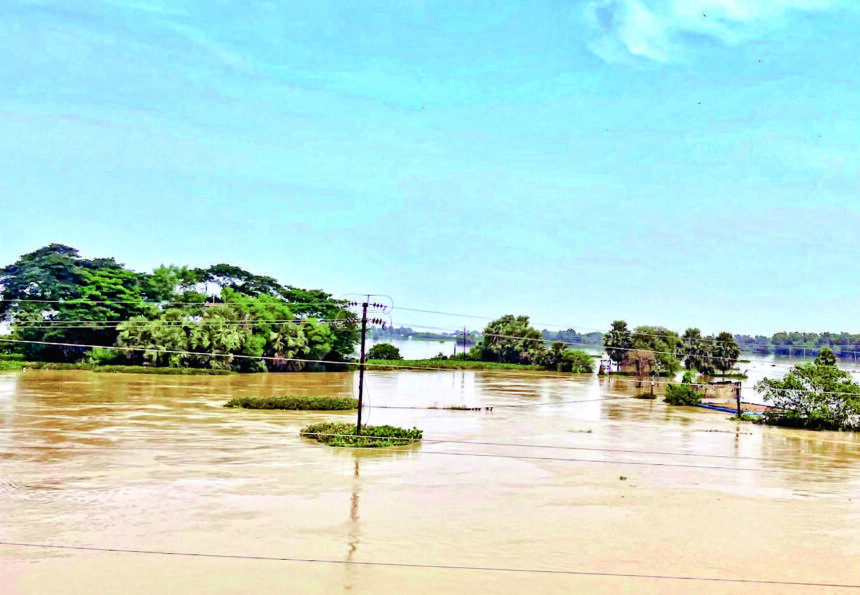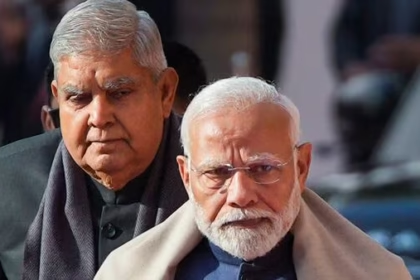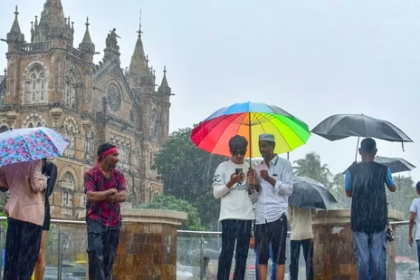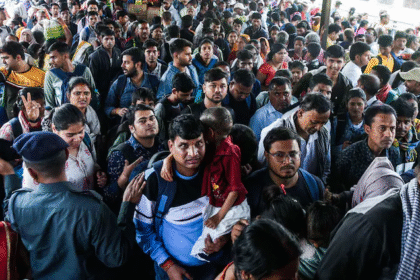Ghatal Residents Still Await Flood Master Plan After a Century of Broken Promises
Tragic scene unfolds once more in Ghatal, a low-lying subdivision in West Bengal’s Paschim Medinipur district. For the fifth time in just a few months, the landscape is one of submerged homes, flooded fields and lives thrown into chaos. It is a recurring disaster that has forced almost every family to own a boat just to survive.
For the more than 2,00,000 people in the region, this yearly flood is a stark reminder of a century of broken promises, epitomised by the perpetually stalled Ghatal Master Plan. To many, it’s a political illusion that makes an appearance during elections only to vanish once votes are cast.
At least seven people have died in this year’s floods, yet it rarely makes it to daily discussions. The human cost of this delay is measured in generations of normalised disaster.
“In our area, permanent houses are being built on pillars almost eight feet above the ground. Those living in mud houses are always ready to flee in tin boats. During floods, living in school classrooms for 15 days in shifts has become a rule here,” says Shamsher Ali, a farmer from Pingla, matter-of-factly.
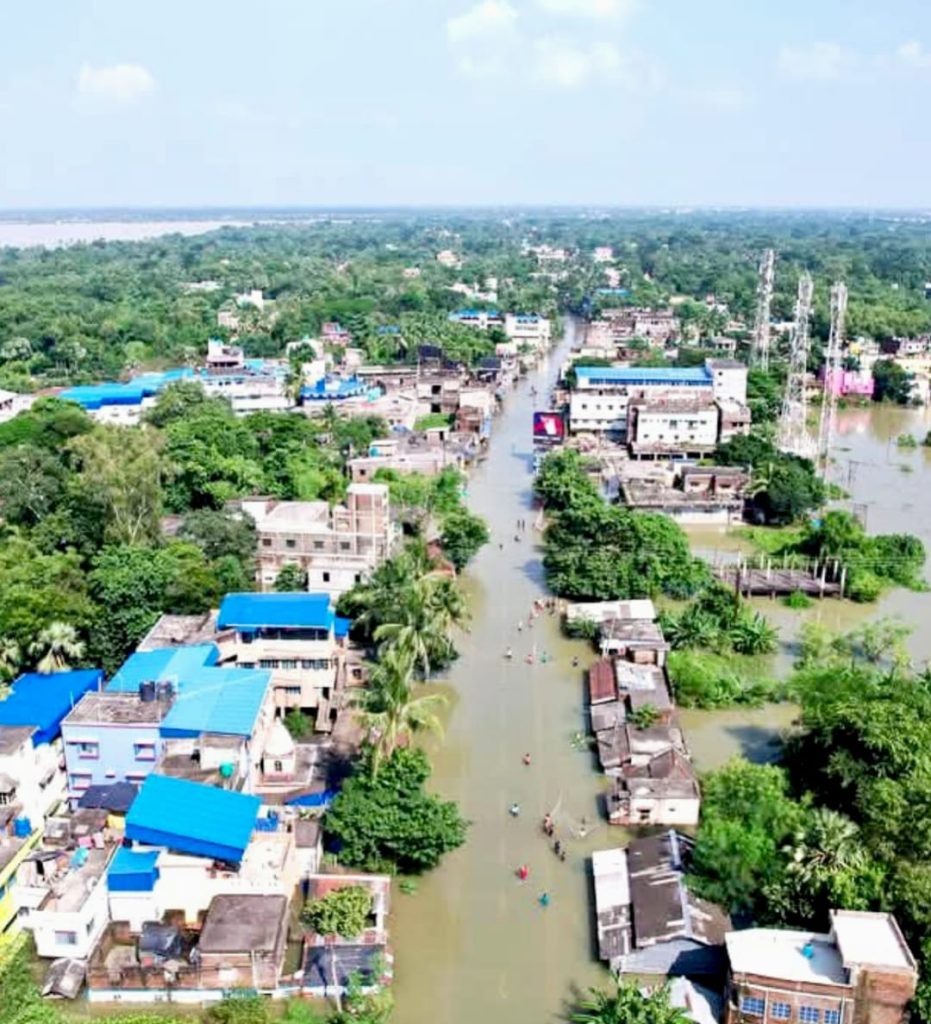
This grim reality is the direct result of a project defined by its failures. The crisis is rooted in decades of government inaction, with the original Ghatal Master Plan, conceived after independence, becoming a pawn in a relentless political tug-of-war.
Ghatal’s unique geography makes it a natural hydraulic trap. The area is a low-lying, basin-shaped “cauldron” that sits barely 7-9 metres above sea level. It is surrounded by the Shilabati, Rupnarayan, Kangsabati and Jhumi rivers, as well as over 70 smaller streams. The Shilabati’s steep upstream gradient flattens drastically near Ghatal, choking its discharge capacity. This makes even a moderate rainfall of 200 mm capable of causing catastrophic floods.
This natural vulnerability is made worse by a colonial legacy. Old embankments, built for irrigation rather than flood control, have caused the riverbeds to rise with silt. In just 25 years, the Rupnarayan River has accumulated 26.57 million cubic meters of silt, severely limiting its ability to carry water and increasing flood risks.
The recurring flood displaces hundreds of thousands of people, destroys homes and crops, and turns the town into an island during the monsoons every year. Yet, this grim reality is the direct result of a project defined by its failures.
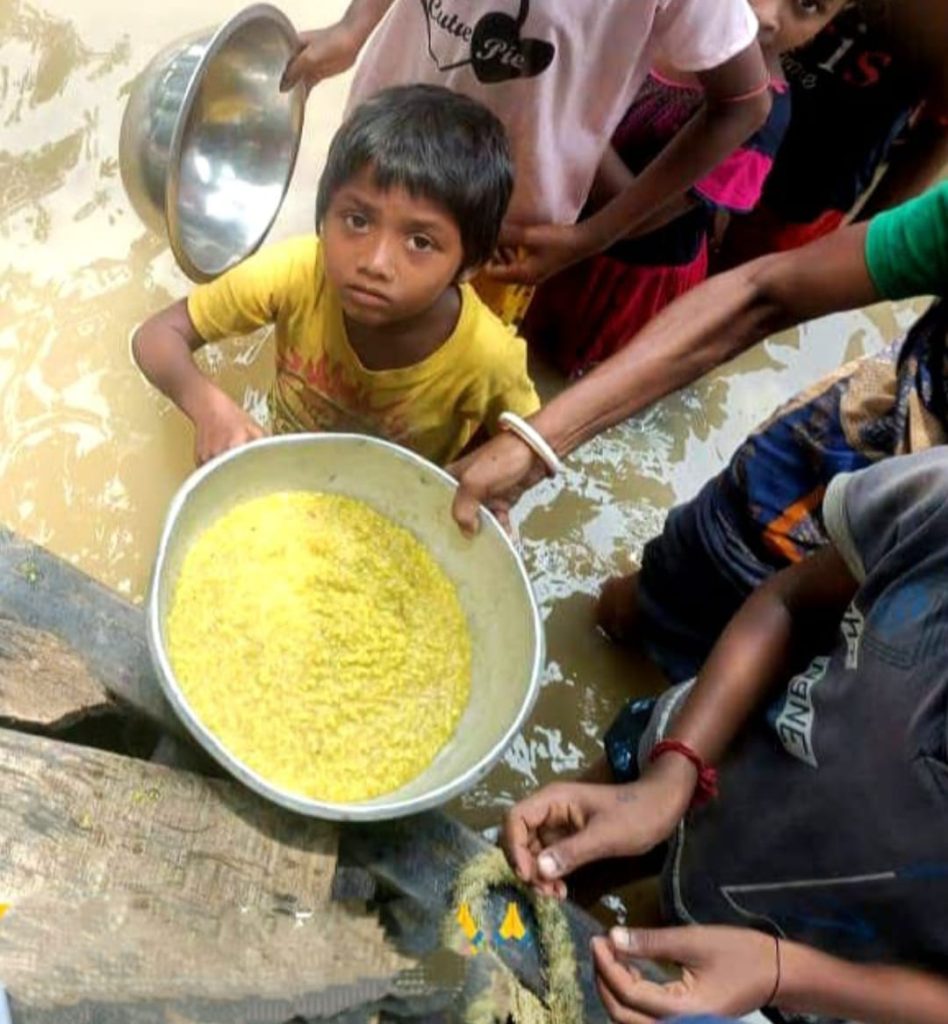
The crisis stems from decades of government inaction. The original Ghatal Master Plan, a solution conceived after independence, has instead become a pawn in a relentless political tug-of-war. Although the issue was first raised in Parliament in 1956, the plan wasn’t officially introduced until 1980.
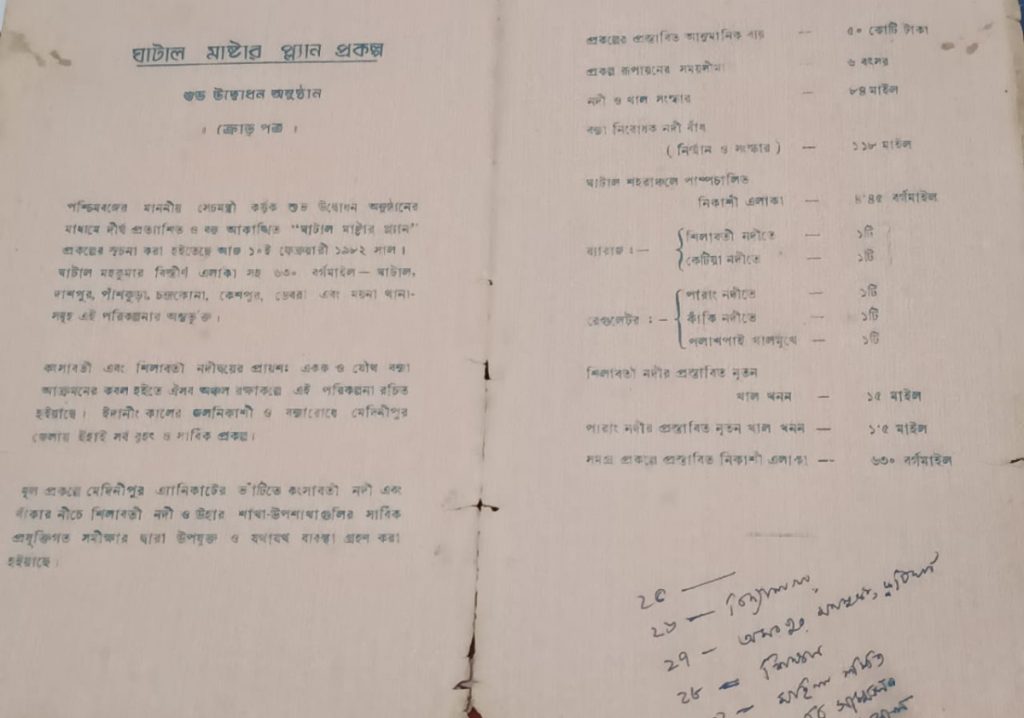
“The first foundation stone was laid long back in 1982. The budget was only ₹52 crore. But the project stalled because the Centre did not release its share of funds. Earlier the Congress at the Centre played this role, now BJP is doing the same,” says Ashok Santra, local CPI(M) leader who has been involved in this during the earlier regime.
The plan was revived between 2009 and 2011 with a comprehensive Detailed Project Report (DPR) by WAPCOS LIMITED, estimating the cost at Rs 1,740 crore. Yet, it too became mired in bureaucracy and political disputes.
Dipak Adhikari, better known as Bengali film actor Dev, has been representing Ghatal in Parliament for three consecutive terms on a Trinamool Congress (TMC) ticket. Despite drawing criticism for his poor attendance record, barely 12% across sessions, he has repeatedly flagged the constituency’s most pressing concern to control devastating floods, though without any tangible results.
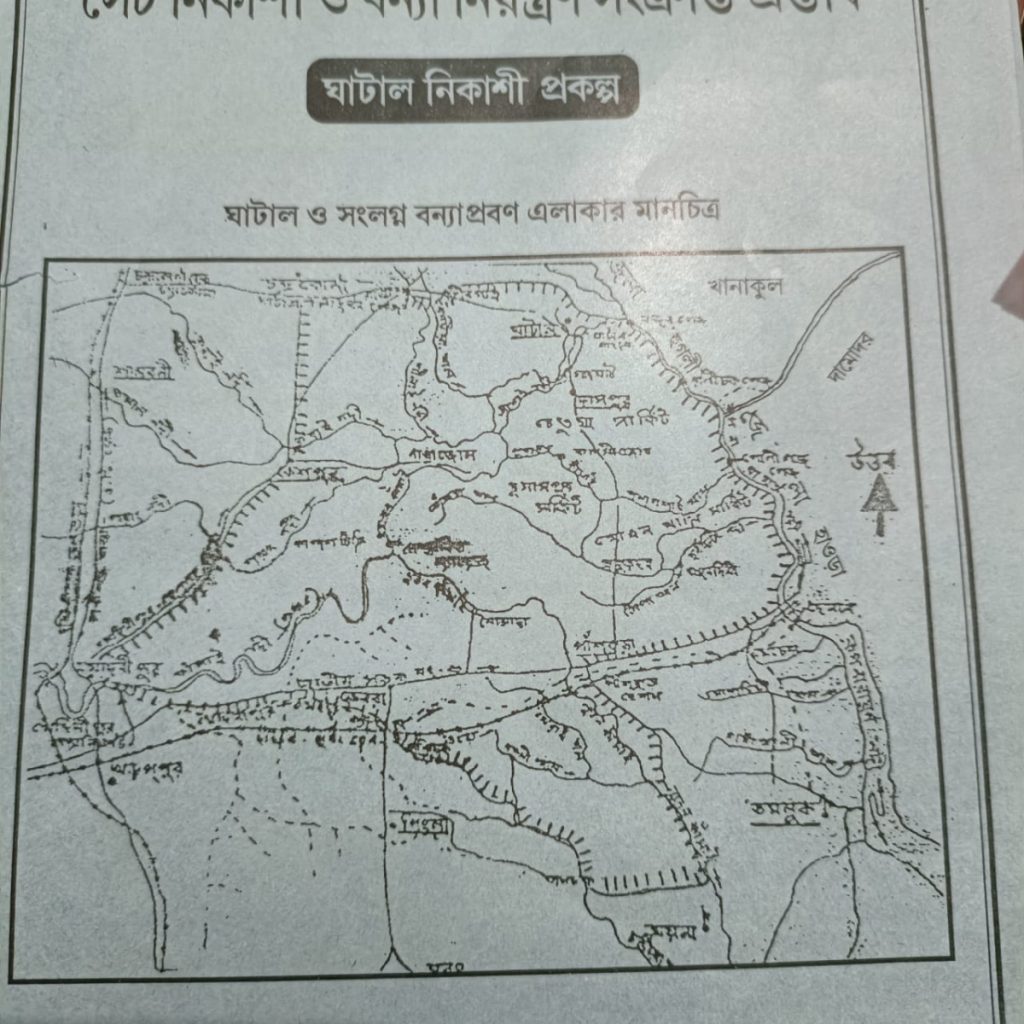
Just before the 2024 general election, he threatened not to seek re-election, relenting only after the ruling party committed to addressing the problem. Subsequently, the state government allocated Rs 500 crore for a solution. The proposed Ghatal Master Plan covers an area of 1,659 square kilometres, spanning 12 blocks and 5 municipalities across two districts which would benefit around 2.1 million people. Yet, a comprehensive solution to the flooding seems to be nowhere in sight.
“Dev’s determination, Abhishek’s promise, and Didi’s efforts have started the Ghatal Master Plan,” claims Dilip Majhi, president of TMC’s Ghatal block. “Some sluice gates are being painted. When the water recedes, work will proceed at war-footing. The tenders are done.”
However, the current work – focused on building an embankment around Ghatal town and repairing sluice gates – is a far cry from the comprehensive plan drafted by experts. The new embankment project is set to demolish at least 4,000 houses and shops, sparking protests.
The public’s cynicism is captured in a local saying: “Plan ta master-er, kaj ta disaster-er” (The plan is a master’s, but the work is a disaster’s).
Piyushkanti Basu, a river expert and former irrigation department chief secretary, who has worked extensively on the original plan, expressed his bewilderment. “In 2009, the project cost stood at Rs 1,550 crore… WAPCOS LIMITED submitted the proposed project for Rs 1,740 crore,” he says.
“Our goal was to split the massive water flow at the beginning and slow its velocity to keep everything under control. I do not know what they intend to do,” he says.
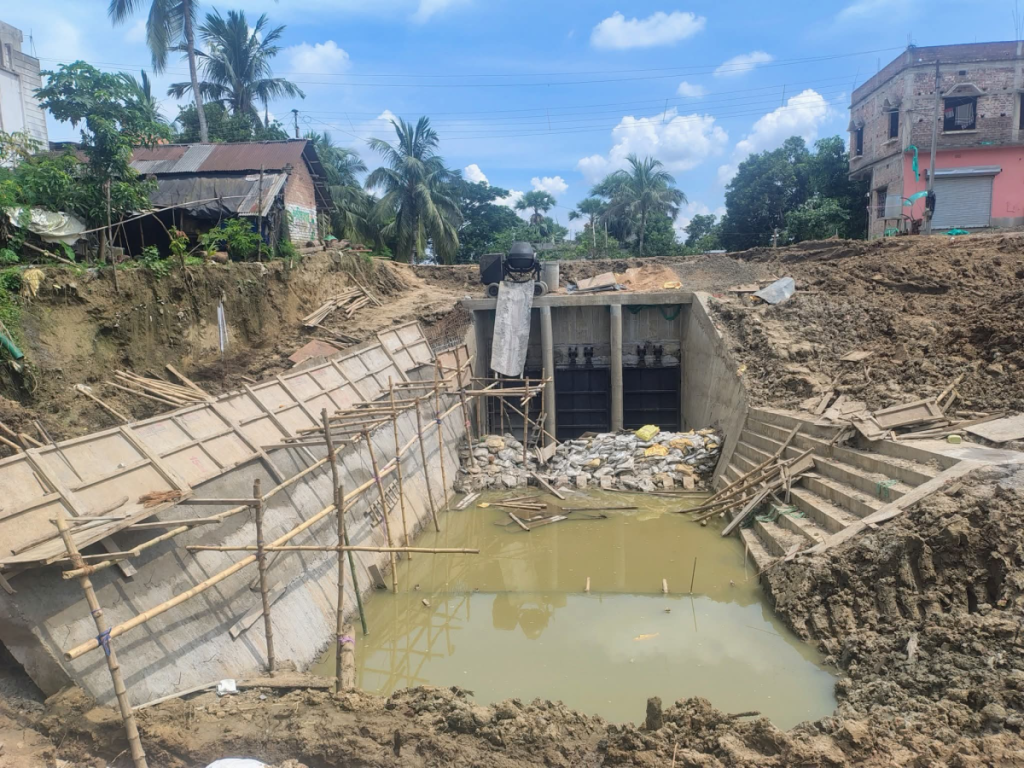
This sentiment is echoed on the ground. “Only they know what they are doing,” says local resident Nandalal Jana.
“This project is not just about building embankments around the town… Our MP Dev is a good person, but useless. We cannot even approach him – he is always out of reach.”
The Wire tried to reach out to Dev for his comment. The report would be updated on getting a response. His last public statement on this issue was posted in June.
Written in Bengali, the Facebook post read:
“For the past 10 years, I have raised the demand for the Ghatal Master Plan in every Lok Sabha session. Yet, despite repeated efforts, the Union government never responded. In 2024, it was the state government that finally took the decision and allocated one-third of the required budget (Rs 500 crore). Work began in February 2025. The Master Plan includes dredging 78 km + 52 km of rivers, constructing embankments, bridges, digging and restoring canals, creating artificial channels and acquiring land. The project timeline is at least 4–5 years.
As floods hit Ghatal, people’s anger will, as always, fall upon their public representatives. But during this crisis, the government and the administration remain firmly by your side.”

“Everyone wants the project, but what the government is doing now is a farce. Such a massive project has no proper report. This is nothing but a programme to fill party workers’ pockets before elections! Even I, as an MLA, do not know what the government is doing there,” says Ghatal BJP MLA Sheetal Kapat.
As the lowlands remain waterlogged, the people of Ghatal are caught in the same cycle of fear and frustration again. For them, the master plan still remains an unfulfilled promise.
Also Read: India Braces for Massive Layoffs as Trump’s 50% Tariffs Bite


